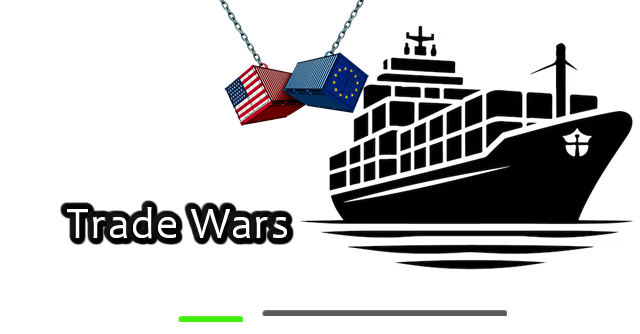In a significant shift in global trade dynamics, the United States has recently implemented stricter export controls on semiconductor sales to China. This move, aimed at curbing China's access to advanced chip technologies, has sent ripples through the global tech industry. Major chipmakers, including Intel, AMD, Qualcomm, and TSMC, are now navigating a complex landscape of new regulations that could reshape the future of semiconductor supply chains.
Understanding the New Export Controls
The U.S. government's updated export controls require companies to obtain special licenses to sell certain semiconductor products to Chinese entities. These measures target advanced chips that could potentially be used in military applications or to enhance China's technological capabilities in areas like artificial intelligence and supercomputing. The restrictions have raised concerns among chipmakers about potential revenue losses and operational challenges in one of the world's largest markets for semiconductors.
Impact on Major Chipmakers
- Intel Corp.: As a leading supplier of CPUs for data centers, Intel derives a significant portion of its revenue from China. The new export controls pose a threat to its business within this lucrative market, potentially affecting its market share and profitability.
- Advanced Micro Devices (AMD): AMD's MI250 artificial intelligence chips are among the products affected by the new licensing requirements. While the company has stated that the impact on its business will be minimal, the uncertainty surrounding the approval process for licenses could disrupt its operations.
- Qualcomm Inc.: Qualcomm plays a crucial role in supplying advanced chips used in intelligent vehicles and data centers in China. With nearly half of its revenue coming from the Chinese market, the export restrictions pose a significant risk to its business prospects in the region.
- Taiwan Semiconductor Manufacturing Company (TSMC): As a key supplier of semiconductor manufacturing services, TSMC faces challenges in navigating the new export controls. The company must ensure compliance with U.S. regulations while maintaining its operations in China, balancing the interests of both governments.
Broader Implications for the Global Chip Industry
The tightening of U.S. export controls underscores the growing geopolitical tensions between the U.S. and China over technology and trade. These developments may prompt other countries to reevaluate their own policies regarding semiconductor exports and technology transfers. Additionally, the restrictions could accelerate efforts by China to develop its own semiconductor capabilities, potentially leading to a more fragmented global tech ecosystem.
Conclusion
The U.S. government's decision to impose stricter export controls on semiconductor sales to China marks a pivotal moment in the ongoing trade and technology rivalry between the two nations. For global chipmakers, this means navigating a more complex regulatory environment and adapting to shifting market dynamics. As the situation unfolds, companies will need to stay agile and informed to mitigate risks and capitalize on new opportunities in the evolving semiconductor landscape.
Other Posts
- The New Gold Coin for Ghana (GGC): Value, Benefits, and How to Buy
- How to Pay Less Tax in Ghana: Smart Income Tax Planning Strategies for 2025 and beyond
- How to Reduce Your Taxable Income in Canada: 2025 Legal Tax Hacks
- Slash Your IRS Bill: 10 Legal U.S. Tax Reduction Strategies for 2025
- Pension Benefits in Ghana: How to Maximize Your Retirement Contributions
- How to Reduce Your UK Income Tax Bill: 10 Smart Legal Strategies
- Making the Numbers Work for You: Essential Financial Insights Every Business Leader Must Know
- US Tightens Chip Export Rules to China: What It Means for Global Chipmakers
- Exchange Rates: How Currencies Gain or Lose Value
- Training for Speed: Expert Tips to Improve Your Sprinting Performance
- SMART Fitness Goals: The Key to Staying Motivated and Reaching Your Fitness Potential
- Fitness Tracking Devices: Do You Really Need a Smartwatch?
- Enhance Your Training with Wearable Fitness Tech: Track, Improve, Achieve
- Why Recovery Matters: Understanding the Role of Rest Days for Fitness Progress
- Fitness Strategies: How to Build Lean Muscle Effectively
- Maximize Your Workout Results: Top Foods to Eat Before and After Exercise
- Real Estate Crowdfunding: A Low-Cost Way to Invest in Real Estate
- Real Estate Investing Strategies: How to Flip Houses & Build Passive Rental Income
- Mobile Payments: The Future of Fast and Secure Transactions
- AI in Finance: How Artificial Intelligence is Revolutionizing Financial Services
- The Future of Insurance: How InsurTech is Disrupting Traditional Models
- Understanding Your Financial Behavior: The Psychology of Money & How to Manage It
- Breaking Free from Debt: Proven Strategies to Achieve Financial Freedom
- The Hidden Dangers of IoT: How to Safeguard Your Connected Devices
- IoT and Agriculture: Feeding the World with Technology
- AI Investing: Best AI Stocks to Improve your portfolio
- AI Creativity : Can Machines Truly Innovate
- IoT For Business Efficiency: Key Benefits and Applications
- Cybersecurity Threats: How to Defend Against Digital Attacks
